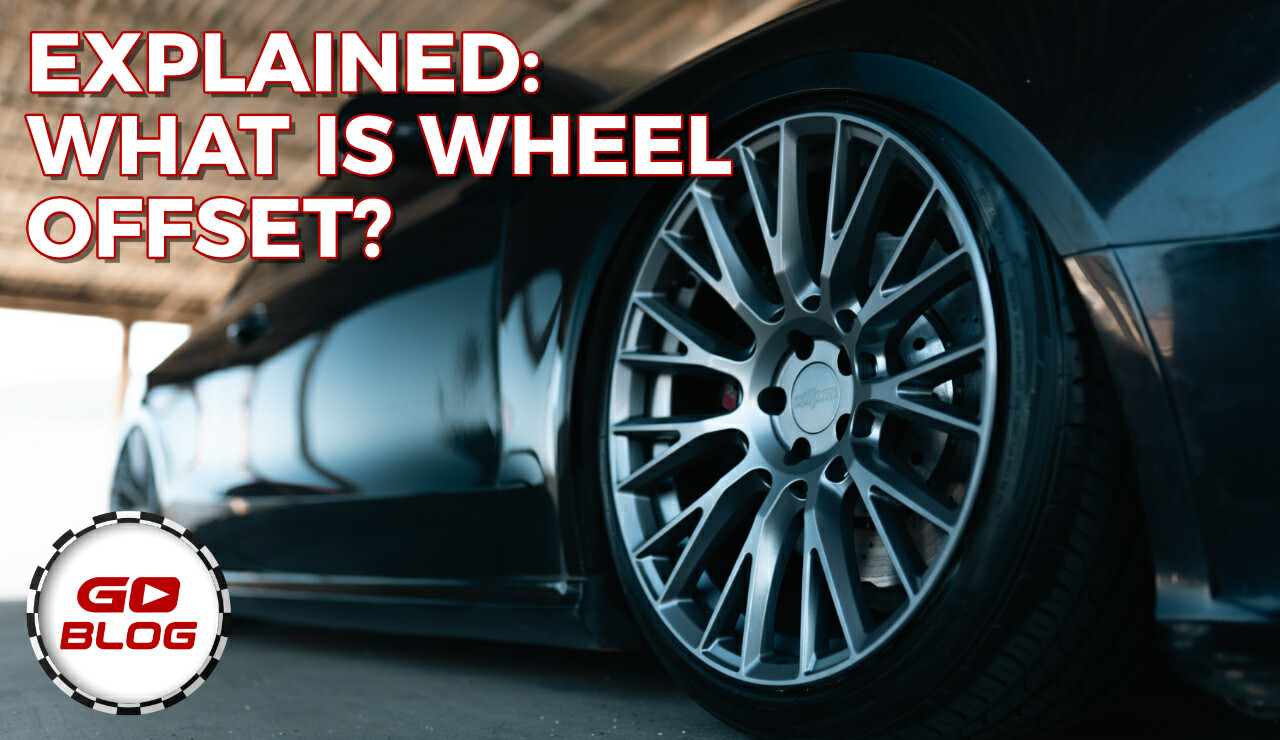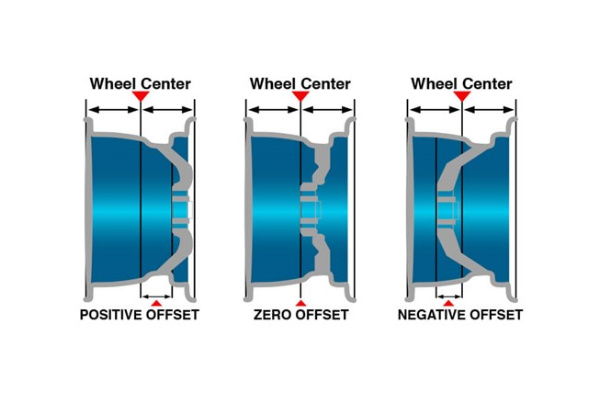Explained: What is Wheel Offset and Why Does It Matter for Your Car?
Posted by WheelSetGo on 8th May 2024

Explained: What is Wheel Offset and Why Does It Matter for Your Car?
Choosing the right wheels for your vehicle isn't just about the style; it's also about the fit. One key aspect of wheel fitment is the wheel offset—a crucial factor that affects your car's aesthetics and its road handling capabilities. This blog will simplify the concept of wheel offset and explore its impact on different vehicle types, helping you make an informed decision when selecting new wheels.
Demystifying Wheel Offset
Wheel offset refers to the distance between the wheel's centerline and the surface of the hub that it mounts to. This measurement is crucial because it determines how far in or out the wheel sits once mounted on your vehicle:
- Positive offset: The mounting surface is closer to the front face of the wheel, pushing it further into the wheel well.
- Zero offset: The mounting surface is aligned with the centerline of the wheel.
- Negative offset: The mounting surface is closer to the back of the wheel, pushing it outwards, which can create a "deep dish" look.

Different Vehicles Come with Different Factory Offsets
Every vehicle is engineered with specific offsets that complement their design for optimal performance and safety. A critical detail often overlooked is that different vehicle models, even within the same make and year, can have varied factory offsets. For example, take the 2023 Dodge Charger: the All-Wheel Drive (AWD) models typically feature a factory offset of +55 mm, while the Rear-Wheel Drive (RWD) models come with a factory offset of +24 mm. These differences cater to the unique structural and performance needs of each drivetrain configuration.
Now, let's consider the impact of choosing an aftermarket wheel with a +45 mm offset, which is quite common in the aftermarket scene. On the AWD Charger, which originally has a +55 mm offset, this new wheel would sit 10 mm further out from the hub compared to the factory wheels. This outward movement is generally minor and is unlikely to cause any rubbing or clearance issues, but it does alter the vehicle’s stance slightly more aggressively.
In contrast, installing the same +45 mm offset wheels on the RWD Charger, which has a factory offset of +24 mm, would result in the wheels sitting 21 mm further inward than the original setup. This significant inward shift could lead to several issues:
- Reduced Clearance: The wheels may be closer to suspension components or the inner wheel well, potentially causing rubbing when turning or under suspension compression. Too much inward movement can simply cause the wheels to not fit, as they can hit components, leading to serious mechanical conflicts.
- Altered Handling: The change in wheel positioning could negatively affect the handling dynamics, potentially making the steering feel less responsive or altering the vehicle’s cornering behavior.
- Aesthetic Impact: The wheels sitting too far inside the wheel wells can also detract from the car’s aggressive, sporty appearance, a quality often valued in RWD sports sedans like the Charger.
This example illustrates why understanding the specifics of factory offsets and how aftermarket choices compare is crucial. It ensures that modifications enhance a vehicle’s performance and aesthetics rather than detracting from them. Always consider how an aftermarket wheel’s offset will interact with your specific vehicle model to avoid unintended consequences.
Determining the right offset involves a few steps:
- Determine your current wheel's offset. For factory wheels, this information can often be found in your vehicle's owner's manual, on a sticker inside the driver’s side door jamb, or online. You can also speak directly with a wheel professional. With aftermarket wheels, the offset number is typically stamped on the back of the spokes. Look for the letters "ET" followed by a number (note if there is a "-" symbol before the number, which indicates a negative offset).
- Consider any modifications you’ve made or plan to make, as these can affect the ideal offset. For example, if you are adding a lift kit, check the specifications listed for wheel fitment to ensure proper clearances.
- Assess your preferred stance. Decide if you want your vehicle to maintain a factory-like stance or if you prefer a wider stance for a more aggressive look. This preference will guide the selection of an offset that can achieve the desired wheel positioning without compromising functionality or safety.
- Consult with experts to ensure the new wheels won’t interfere with your vehicle's operation or safety.
FAQ Section
- How do I find my car’s factory offset?
- You can typically find this information in your vehicle’s owner manual or on a sticker inside the driver’s side door. Online guides also have this information.
- What happens if I choose the wrong offset?
- Choosing an incorrect offset can lead to problems like poor handling, increased tire wear, and even damage to your car’s suspension.
- Can changing my wheel offset improve my car's performance?
- Altering the offset can impact vehicle dynamics significantly. A more negative offset can increase the track width, potentially improving handling and cornering stability. However, it's important to make such changes within the limits that the vehicle's design can accommodate to avoid adverse effects on the steering and suspension systems.
- Is there a legal limit to how much I can change my wheel offset?
- Yes, legal limits on wheel stance can vary by region. These regulations are often in place to ensure safety and roadworthiness. It’s advisable to consult local transport authorities or vehicle modification laws before undertaking significant alterations to your vehicle’s wheel offset.
Wrapping Up
Understanding wheel offset and its implications can seem daunting, but it's a critical component of wheel selection. Knowing the correct offset for your vehicle ensures safer driving, proper fitment, and maintaining your car’s aesthetic integrity. Always consult with a professional when in doubt.
Need help finding the perfect wheels with the right offset for your vehicle? Contact the experts at WheelSetGo at 320-247-6160 or browse our extensive selection online. Let us help you drive smoothly and in style!
